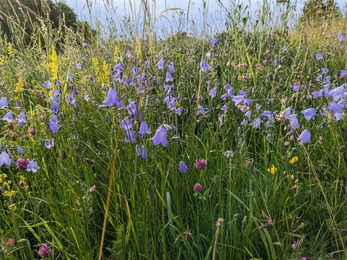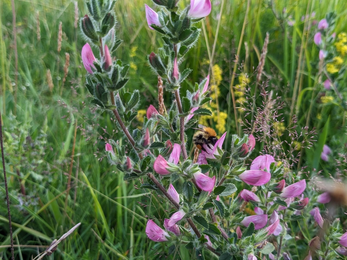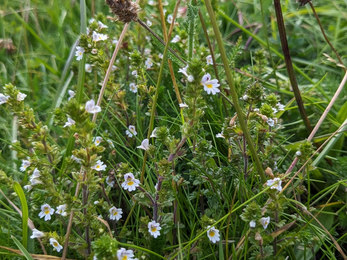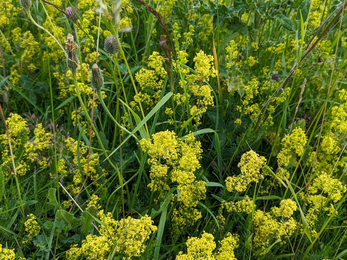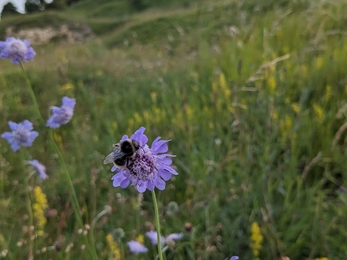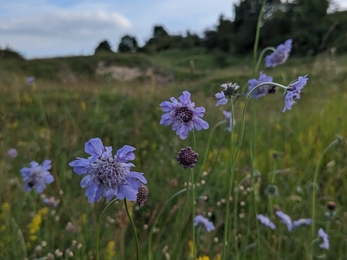A proud industrial heritage; iconic historical landmarks; a Greggs on practically every street corner: there are many assets that come to mind when asked about what the North East has to offer. Of course, we are also nationally renowned for our vast and biodiverse natural areas, an asset we take great care in both maintaining and encouraging. What is perhaps less known about, but arguably more worthy of celebrating, is the fact that we are a stronghold for a very rare but valuable ecological resource; a resource that makes the North East almost the sole home to a diverse array of internationally rare habitats, flora and fauna. This resource? The Magnesian Limestone plateau of eastern County Durham, Sunderland and South Tyneside.
The Magnesian Limestone: The North East’s Underlying Treasure
An array of species across Herrington Hill
Let me take you back to the Carboniferous period. The area is inundated with clubmosses, horsetails, giant primitive trees and insects over a metre in length, and the tropical swamp you find yourself standing in will, in 300 million years, be known as the North East of England. Eventually, this impressive flora will die and decay, and under many millions of years of compression become coal. This coal will then undergo more compression and folding under the earth’s movements to form hills and mountains, which will erode into vast deserts of sand by the start of the Permian period. It is at this point in time that we start to see the formation of the Magnesian Limestone; when flooding of these vast deserts by the Zechstein Sea allowed the deposition of minerals rich in magnesium and calcium above layers of coal. And here we are, 270 million years later, sitting on two thirds of the nation’s Magnesian Limestone resource.
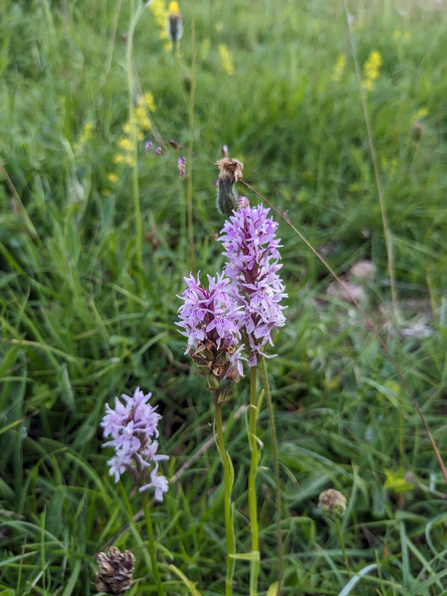
Common spotted orchid (Dactylorhiza fuchsii) at Herrington Hill
It wasn’t until 1822 when a decline in production of exposed coalfield in the West made collieries turn to previously un-mined territory in the East that the Magnesian Limestone of East Durham was excavated for the coal that lay underneath it. Indeed, the raw materials found in the Magnesian Limestone were themselves also of high industrial value, leading to the establishment of many Magnesian Limestone quarries. Whilst such economic developments may have historically exploited the Magnesian Limestone for its commercial value, they have arguably benefitted Magnesian Limestone plant communities today. For example, the Durham Coastal Railway line, which was built to transport coal from coastal mines on the Magnesian Limestone plateau, now provides a physical barrier against urban development onto the coastal habitats. Similarly, former quarries can provide the geological exposure needed to support rich limestone floral communities, such as those seen at Durham Wildlife Trust’s Bishop Middleham Quarry and Raisby Hill.
Today, a range of unique habitats can be found across the Durham Magnesian Limestone plateau, all supporting species-rich assemblages of plants, invertebrates, mammals, reptiles and birds, many of which are rare. One such habitat is Magnesian Limestone grassland. Of internationally recognised importance, over 279 of the 307 hectares of Magensian Limestone grassland in the North East are designated Special Sites of Scientific Importance and have legal protection under the Wildlife Countryside Act of 1981. The habitat can be characterised by species such as small scabious (Scabiosa columbaria), blue moor-grass (Seslaria caerulea), carline thistle (Carlina vulgaris), dark red helleborine (Epipactis atrorubens), and many other wonderful species of orchid, all of which are supported by the mineral-rich soil. The vegetation in turn supports a wealth of invertebrates, including the elusive and famous ‘Durham’ argus butterfly, the endemic Least Minor moth, and the glow-worm. It is guaranteed that botanists and entomologists alike will be in their element when taking a walk through a Magnesian Limestone grassland on a summer's day.
If you are looking to explore Magnesian Limestone grassland, a good place to start is the Durham Coast, where one third of the UK’s Magnesian Limestone grassland can be found. In fact, it is strongly recommended that you do, for the Durham Coast is a haven for internationally rare and unique plant assemblages. This 30km coastal stretch lies in an area where the warm and dry conditions of the South meet the cool and wet conditions of the North. The Durham Coast can therefore simultaneously support northern-distributed species at their most southern limit, such as Northern purple milk vetch (Astragalus danicus), and southern-distributed species at their most northern limit, such as the burnt orchid (Orchis ustulata). Further helping to support the rich diversity of flora and fauna found on the Durham Coast is a variety of different habitat types, including exposed sea cliffs, sand dunes, rocky shores, headlands and sheltered coastal denes. One can expect to find a rich and diverse array of flora on the Durham Coast, including, but certainly not limited to, common scurvygrass (Cochlearia officinalis), common rockrose (Helianthemum nummularium), heather (Calluna vulgaris), and juniper (Juniperus communis). The Durham Coast is also of high ornithological importance, being a popular feeding and breeding site for many migratory, wading and sea birds, such as the little tern.
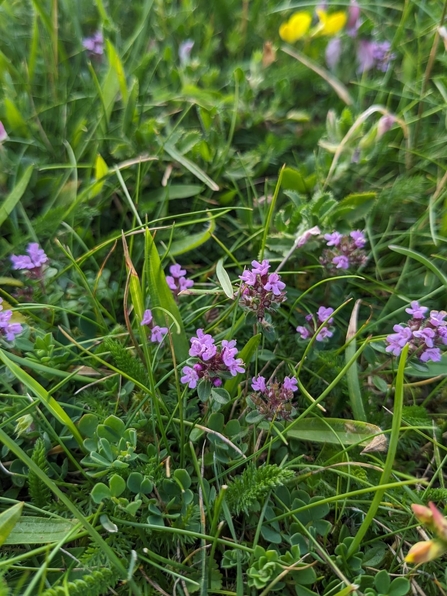
Wild Thyme (Thymus polytrichus) at Herrington Hill
It is the interesting geological history, the industrial importance, and most crucially the internationally recognised rare biodiversity of the Durham Magnesian Limestone Plateau that make it one of the North East’s most precious treasures. And treasures need to be protected. Durham Wildlife Trust have the privilege of being entrusted with the protection and management of several Magnesian Limestone sites; Herrington Hill, Kelloe Field, Redcar Field, Trimdon Grange Quarry, Town Kelloe Bank, Raisby Hill Grassland, Hawthorn Dene, Blackhall Rocks and Bishop Middleham Quarry. In each of these sites, our dedicated team of staff and volunteers strive to maintain and encourage the wonderful biodiversity that is characteristic of the Magnesian Limestone. I hope that you may be convinced to visit one of these sites, and see with your own eyes what this special geological landscape has to offer.
Help us protect special places like those mentioned in this blog
Become a member of Durham Wildlife Trust today


